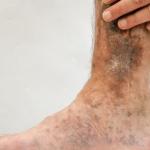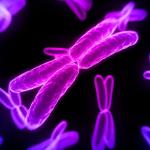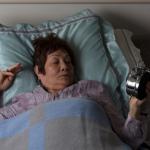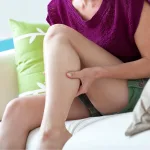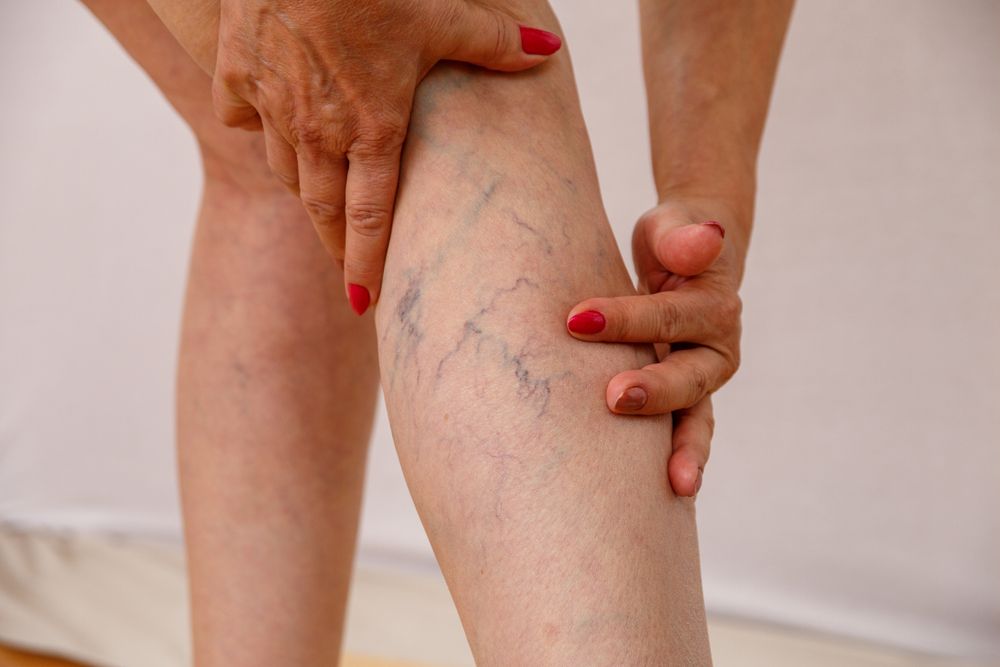
Menopause affects the body in different ways, such as causing bones to become brittle and sexual desire to decrease. It can also cause varicose veins to appear in the legs. Varicose veins are twisted, enlarged veins that are of a dark blue or purple hue. These veins may be asymptomatic, but can also cause burning, swelling, or itching where they are located. Many people aren’t aware that menopause and varicose veins are related, but they shouldn’t be ignored.
The Relation of Menopause and Varicose Veins
Menopause happens at the end of a woman’s reproductive years, occurring between 40 and 50 years of age, 12 months after her last menstrual cycle. As a woman gets closer to menopause, her ovaries produce less of the female hormones called estrogen and progesterone. Once hormone levels drop to a certain point, she no longer produces eggs for fertilization. Many changes occur in a woman’s body at this time that can interfere with enjoying a normal lifestyle, although there are a variety of treatments for symptoms.
Medical menopause occurs when a woman goes through a hysterectomy that removes the egg-producing ovaries. Cancer treatment can cause menstruation to start earlier than normal or end it altogether in some patients. Other underlying health issues can also lead to a drop in hormones that may cause early-onset menopause.
The development of varicose veins with menopause is due to a decreased production of estrogen and progesterone. Besides controlling reproduction and other sexual functions, these hormones also contribute to vascular health. When these hormone levels decrease, it causes vein walls to weaken. The lower hormone levels can also lead to malfunctioning vein valves, which increases the chances of blood collecting in the legs and ankles.
The hormonal changes that occur before and during menopause means that women are more likely to suffer from varicose veins compared to men. Studies[1] show that varicose veins affect 22 million women and 11 million men between the ages of 40 to 80 years old.
While you may think of varicose veins as only a normal sign of aging or a side effect of menopause, they are a sign you may have vein disease. At USA Vein Clinics, our experienced doctors offer the care you deserve to feel better and get back on your feet. Even if you are not experiencing symptoms of varicose veins with menopause, it is best to consult with a specialist if you have visible signs of enlarged veins as the impacts of the disease may increase over time.
SIGNUP FOR MORE HEALTH NEWS & UPDATES
Does Menopause Cause Varicose Veins?
While menopause doesn’t cause varicose veins directly, it can contribute to the development of vein disease throughout a woman’s body. In addition to the drop in hormone levels that can lead to weakened vein walls, menopause has other effects.
Unintended weight gain is a common side effect of menopause that can put more pressure on blood vessels and can lead to varicose veins. A sedentary lifestyle, standing or sitting for extended periods of time, will also prompt the development of varicose veins.If you are concerned about whether does menopause cause varicose veins, it’s important to understand how the two are related.
Menopause and Varicose Veins: What Can I Do to Decrease Vein Disease Severity During Menopause?
Developing varicose veins with menopause isn’t an absolute. You can take certain actions to prevent the onset of vein disease and manage it if you start to notice the development of varicose veins. You can talk to your doctor about prevention and treatment, but you can also take steps on your own even before you notice any issues. Below are suggestions for how to manage vein disease while going through menopause.
- Eat Healthy: The best foods to decrease the risks of vascular disease during menopause are fruits, vegetables, whole grains, low-fat dairy products, skinless poultry, and fish. Your diet should be low in sodium, saturated fats, and sugary beverages.
- Stay active: Participating in low-impact exercise is good for your circulatory system overall, and it can help keep blood from pooling in the legs.
- Monitor Your Blood Pressure and Cholesterol: Make sure to work with your doctor to track your blood pressure and cholesterol levels to improve your vascular health.
- Reduce Stress: Stress can negatively impact your physical health. Be proactive about self-care and talk to your physician about ways you can lower your stress, like yoga, reading, or meditation.
- Limit Hormone Replacement Therapy (HRT): While some HRT is good to relieve menopause symptoms, it increases a woman’s chances of having a stroke or heart attack. It can be a short-term method for reducing effects of menopause but is not the most effective choice if you have or are at risk for PAD.
These lifestyle changes are only the first piece in the puzzle of menopause and varicose veins. It’s crucial to find out how vein treatment can reduce your risk of serious health conditions like venous ulcers or blood clots.
Schedule A VEIN Consultation ONLINE
Hormone Replacement Therapy for Varicose Veins From Menopause
For some women, taking extra precautions and following all the advice from doctors for how to prevent varicose veins, it may not be enough to combat their development. For these women, Hormone Replacement Therapy (HRT) may be a good solution for menopause and varicose veins. HRT involves artificially raising the levels of the hormones that diminish during menopause.
HRT is useful in preventing osteoporosis, which can help you to avoid fractures later in life. It can also help relieve hot flashes, reduce sleep problems, decrease mood swings, and lower your risk for colon cancer. However, as stated above, it can also lead to other health conditions like breast and uterine cancer, heart disease, PAD, heart attack, or stroke. Women who undergo HRT can also experience blood clots and a rise in blood pressure.
While HRT can help lower your risk of developing varicose veins, it can impact your overall health. If you already have varicose or spider veins, you should get checked for the underlying cause. This will help prevent more varicose veins from forming and can also relieve some of your symptoms.
Treatments For Varicose Veins From Menopause
If HRT is not the best option for your health conditions, there are other options like Endovenous
Laser Therapy (EVLT) or Ultrasound-Guide Sclerotherapy which offer alternatives to hormone replacement therapy to treat varicose veins due to menopause. While your varicose veins may seem only aesthetic, the achy feeling in your legs and the discomfort you feel when you walk can worsen if left untreated.
Vein treatment at USA Vein Clinics routes your blood flow to healthy veins, allowing your body to absorb the damaged ones. Once the blood is rerouted, symptoms such as heaviness, fatigue, swelling, restlessness, burning, or cramping can lessen or go away completely. This is because blood can successfully circulate from your legs to your heart.
At our clinics, we specialize in outpatient, non-surgical treatments and are passionate about helping improve our patients’ quality of life with menopause and varicose veins.
Consult with a USA Vein Center Specialist About Varicose Veins After Menopause
Managing multiple health conditions at once can be overwhelming. If you are going through menopause and have varicose veins, USA Vein Clinics wants to help you find a personalized treatment plan that helps maintain your vein symptoms and aid your overall health.
Our experienced vein specialists can help you find the right treatment for you that can take as little as 15 to 30 minutes, depending on the number of veins affected, and is covered by Medicare and most insurances. We have more than 100 locations across the US to make treatment convenient for you close to home as you deal with menopause and varicose veins.
If you are suffering through menopause and varicose veins, contact us at 888.768.3467 or schedule an initial appointment online to learn more about which treatment would work best for you.
[1] Varicose Veins, CirculationAHA August 12, 2014, Volume 130 Issue 7 https://doi.org/10.1161/CIRCULATIONAHA.113.008331

